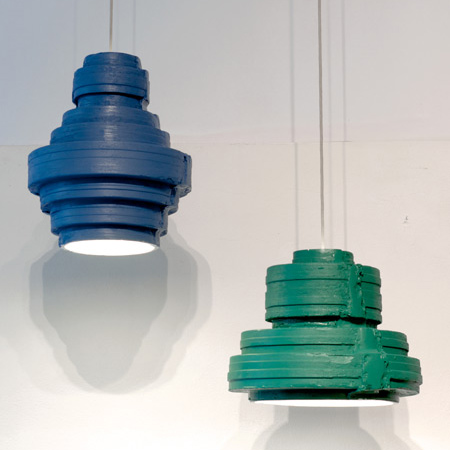Eindhoven designer Julien Carretero has created a collection of lamps, tables and stools by scraping a profile into hardening plaster.
Called Drag, the series is inspired by a technique traditionally used to make cornice mouldings.
Each half is made by pouring plaster over a mould and scraping a profile into its surface as the material sets, using pieces of wood attached to an oscillating frame.
The two parts are then joined to make lamps, tables or stools.
More Dezeen stories about Julien Carretero:
To be continued
Theme & Variations
Here's some text from Carretero:
--
Drag (2009)
Drag uses a traditional technique for making ornamental cornice mouldings using synthetic plaster.
Half-pieces are rotated on a central axis as the plaster sets, then assembled to form a complete round turn.
Several different typologies of objects (lamps, utility table, stool) have been made and each piece is unique.
A minimal industrial process that integrates organic imperfection.
The Drag project deals with a production process inspired by the traditional plaster dragging technique in which the plaster is constrained in shape by a profile while hardening.
This technique traditionally used to produce ornamental cornices is adapted here in order to serially produce various typologies of objects thanks to a single apparatus.
The process results in an infinite variation of shapes, all based on solids of revolution.
Multiple sizes of semi-circular shapes are aligned on the central axe of the apparatus, which drags the plaster on top of them.
The two halves of the object are then assembled together by using the overload of dragged material.
Material : porcelain plaster
Based in Eindhoven (NL) and a frequent exhibitor on the world circuit, from Moss to Experimenta, French designer Julien Carretero explores the possibilities of artisan creation in objects that are lively, vibrant and in constant phase-change.
This is hands-on design, sensual and self-made, inscribed in the sinuous lines of one-off/industrial pieces in the manner of Gaetano Pesce.
What it tells us that a designer can't be just a thinking head, since the most important thing is to put a craftsman's feeling into the fabrication process.

